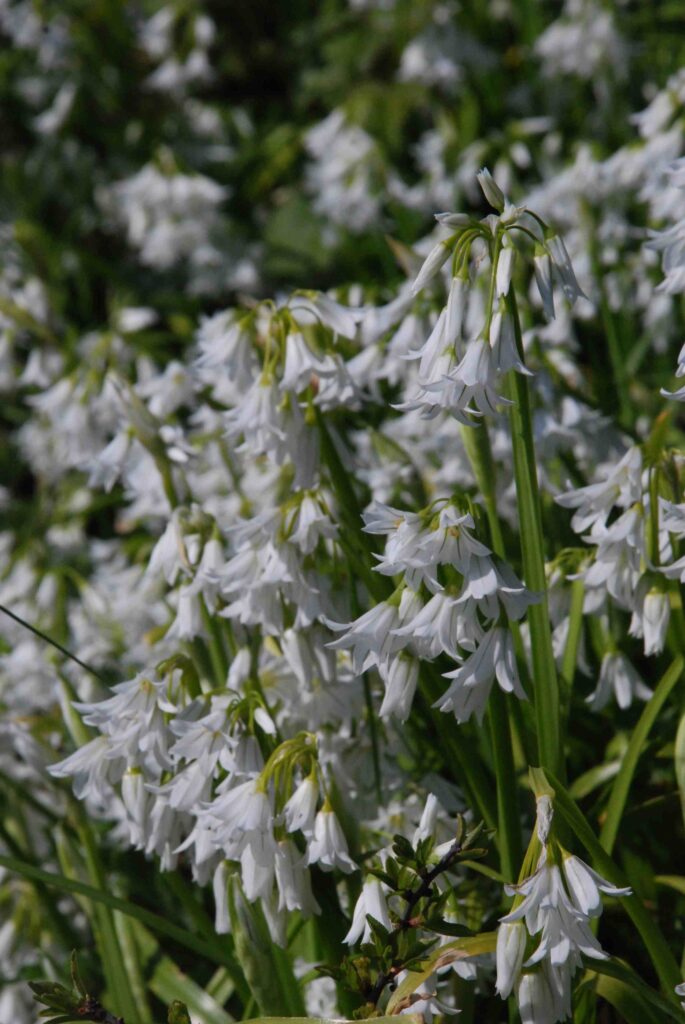
It is time to plant your bulbs for spring colour. The choice can seem bewildering at times with different tulips, daffodils and hyacinths and the host of smaller bulbs. But which are the most attractive to bees?
That is an easy question to answer because it is always alliums, the ornamental onions. The domed or spherical heads of starry flowers open over several weeks and from the moment the first bloom opens, they are sought out by all kinds of bees.
Alliums are also useful in the garden for various reasons:
They are (generally) hardy and will grow in any soil that is not waterlogged in winter
They are perennial so will come up every year and often increase in the garden
Some straddle spring and summer and most are at their best in late April, May, and into June
They provide colour, height and interesting shapes in the border
Alliums vary in size and in price so what you plant will depend on a variety of factors, including your budget.
What would I choose?
Well I have to pay for my plants, just like you, so I am pleased to say that the allium I would recommend, if you are just starting out on the ‘onion journey’, is one of the least expensive.
The best allium to start: Allium christophii (Allium albopilosum)

This allium does everything I want from an allium. The heads of blooms are big – up to 20cm across and the flowers are a lovely, metallic lilac. The flowerheads are just as big and dramatic as other kinds that cost five times as much. Even better, the flowers are just as good when they are dead – unlike most alliums. The petals dry out and remain as strawy stars. The height varies but is generally between 30cm to 45cm in bloom.
Like almost all alliums the foliage is not great when the plants are in bloom – it is already starting to die down. And like (most) other alliums, it grows best in full sun.
Plant a clump of at least five for a wonderful display in May each year.
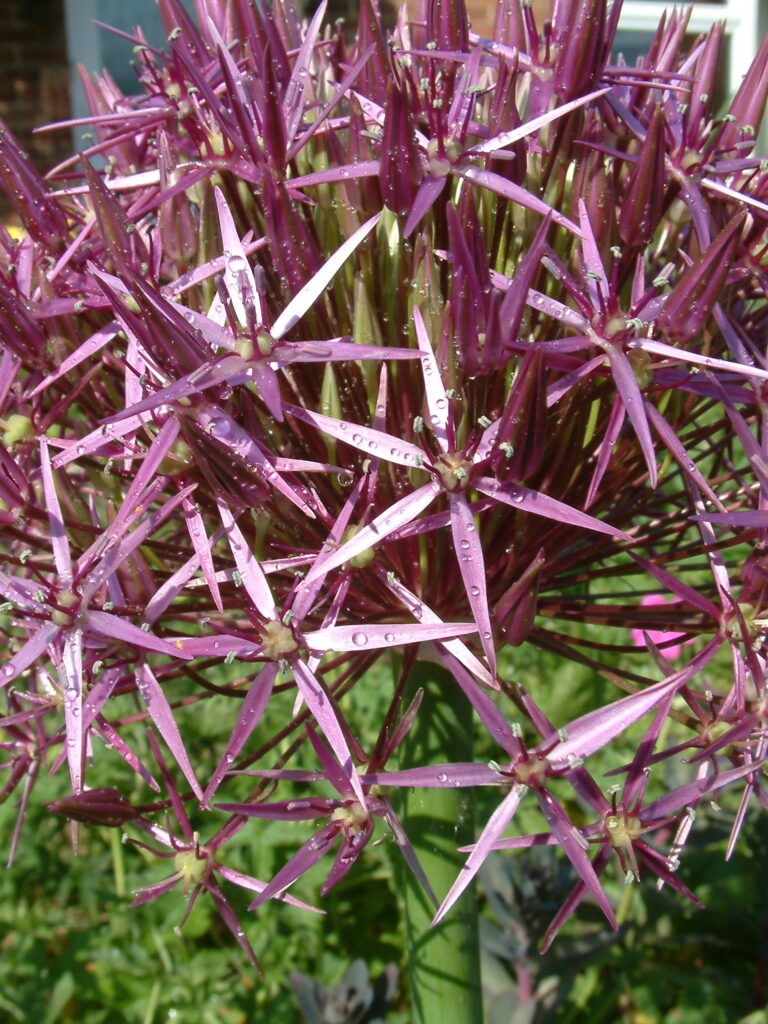
The big, purple balls
There is a bewildering range of tall alliums with purple balls. Some are inexpensive but these tend to have small heads of flowers that only last a week or so. Then there are the superior kinds like ‘Gladiator’ that give a much better display. You decide how much you want to spend.
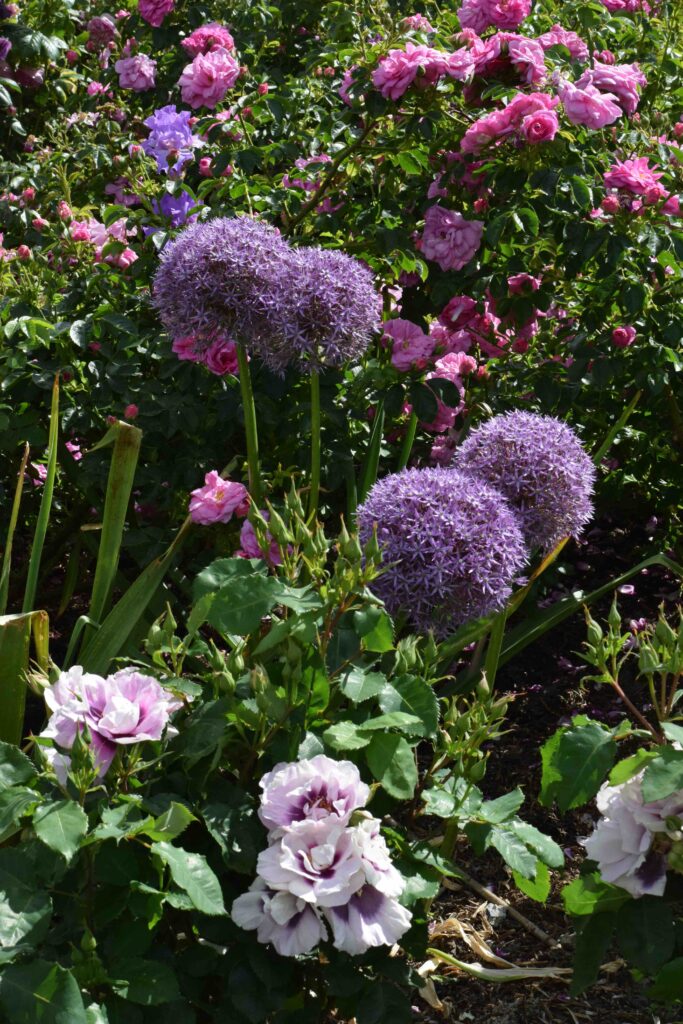
A popular kind is Allium giganteum but despite the name it is not particularly big and it is very expensive. Personally I would not pay the money for it when ‘Globemaster’ and others are better.
A new kind that I planted last year is ‘Party Balloons’ which promises more than one head of blooms per bulb – most only produce one. I am delighted that each bulb did produce three flower heads, at different heights and blooming one after the other. Knights have these in stock but they are selling fast.
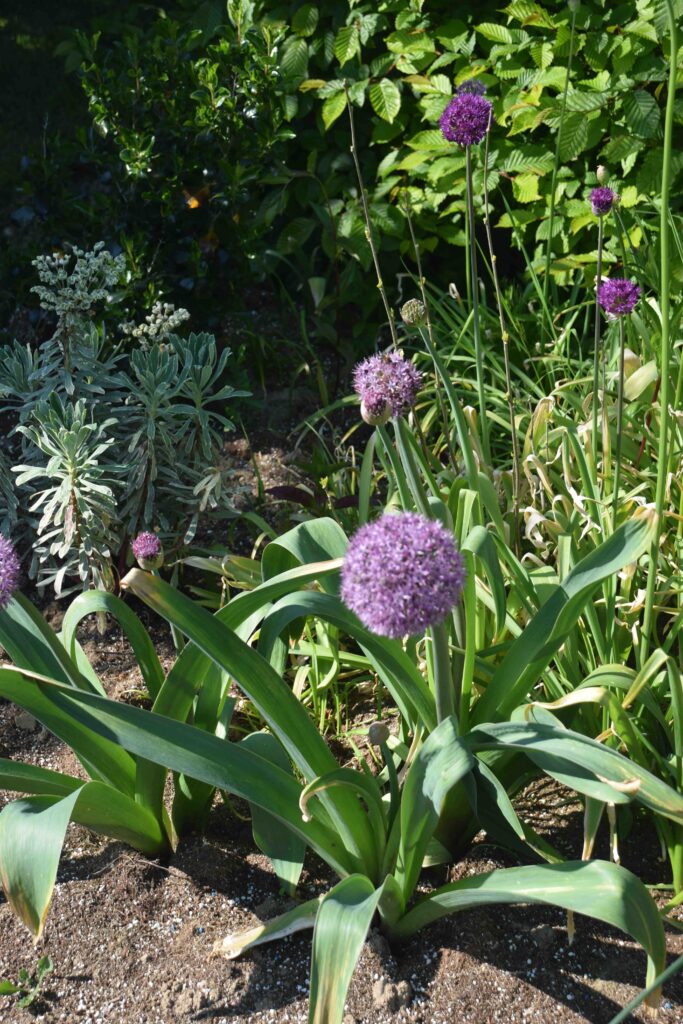
One other that is worth considering is Allium karataviense and its variant ‘Ivory Queen’. This is a dwarf plant only 15cm high with pale flowers but the main quality is that the leaves are an attractive foil to the flowers. It blooms earlier than most too, in April.
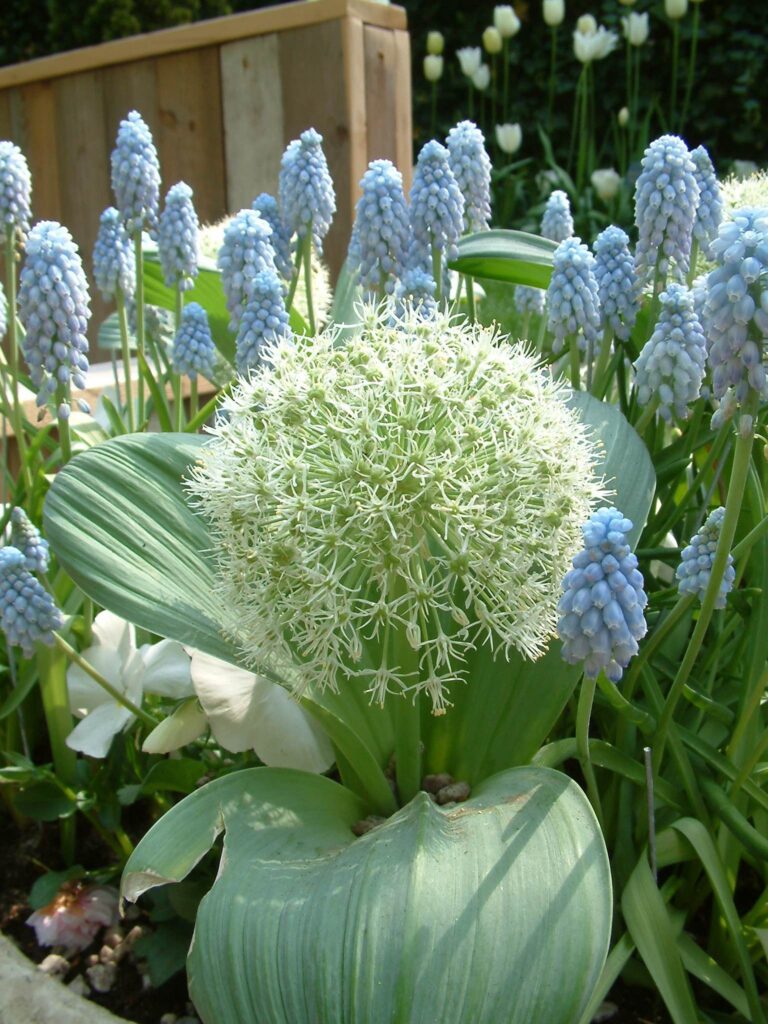
A word of warning. Some (cheap) alliums are very vigorous and seed around. Many offers of cheap mixed bulbs contain large proportions of small alliums – NOT the big purple ones you want. Caveat Emptor.
One native allium that is a real beauty, and famous because celebrity chefs are mad for it, is wild garlic – Allium ursinum.
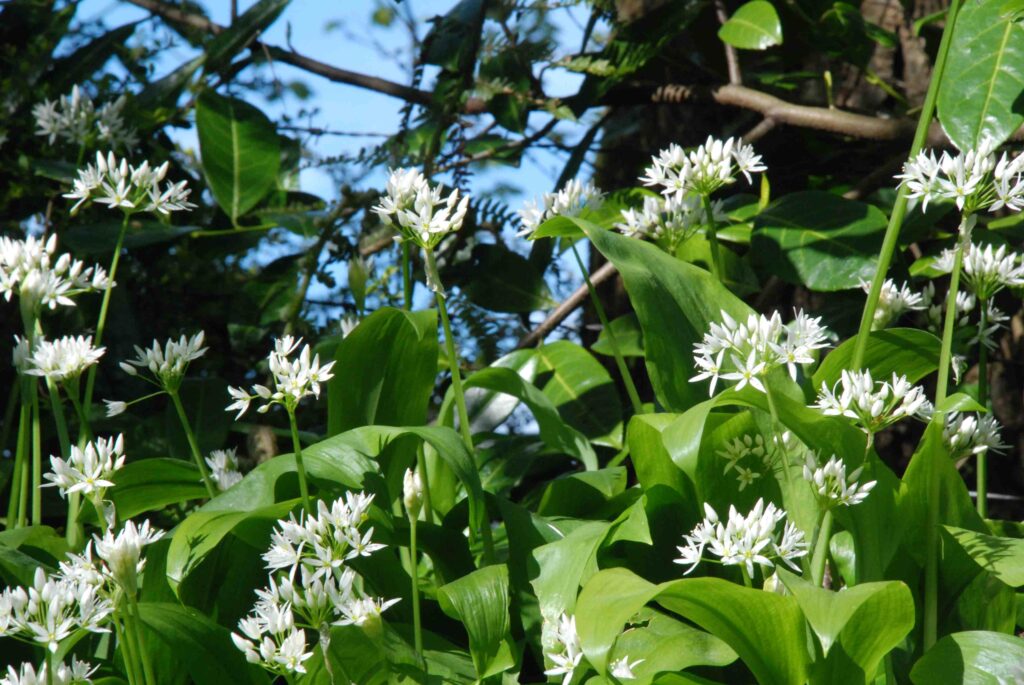
With broad (tasty) leaves and heads of white, starry flowers, it is a pretty thing BUT it is a thug. It grows in shade, in association with bluebells in woods. If you introduce it to your garden be aware that you may regret it in a few year’s time.
There is another allium that will beguile you with its charm, Allium triquetrum, the three-cornered leek. This is often in leaf all winter and it grows best in sun where it forms weed-smothering masses of garlicky leaves, that disappear after flowering in spring. The three-cornered stems carry a cluster of white, bell-shaped blooms and it flowers for many weeks and even makes a pretty cut flower. But it is very invasive. Every year when I see it blooming along hedges I wish I had it in my garden but I know I would soon regret it if I did.
